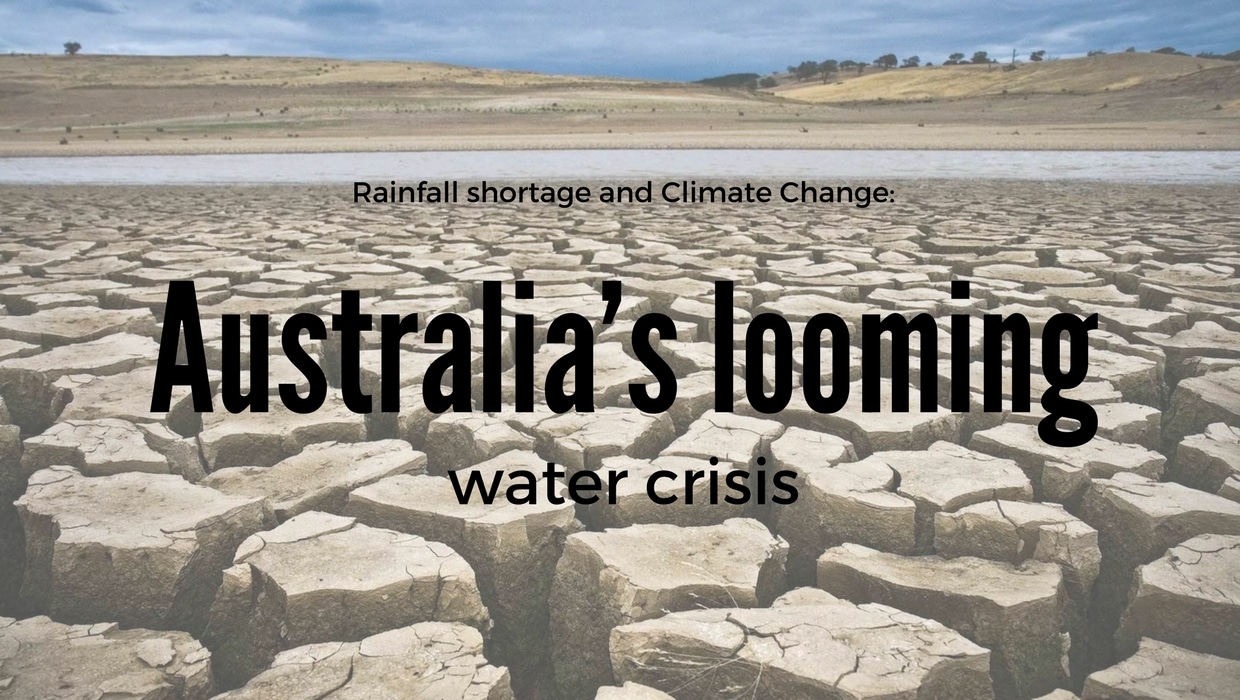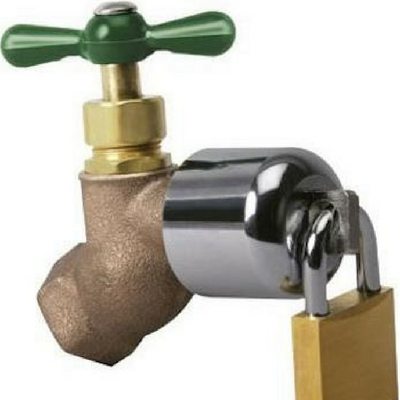Rainfall Shortage and Climate Change: Australia’s looming water crisis

How often do you brush your teeth with the water running? Or fill the bath a little more than you need? Do you water your garden in the midday heat?
It seems as though many people do not understand or care about the scarcity and vulnerability of our precious water resource. In the last several years, Australia has been faced with a dire water crisis, which is threatening communities across the country.
The Water Situation
Can you imagine going through your daily routine without clean water? The statistics show that this is the reality for over 650 million people who do not have access to clean, safe, water.
According to researchers from institutions such as the United States CNA Corporation, Vermont Law School, and Aarhus University, Denmark, there will not be enough water to sustain the world’s population by the year 2040. This frightening statistic has motivated many people to do what they can to limit water use and save the resource wherever possible.
Australia’s Water Supply
With an average annual rainfall of only 469mm per year, Australia’s water situation is quite dire. Australia is also the driest continent inhabited by humans, with very limited freshwater sources. Despite the lack of freshwater, Australians use the most water per capita globally, using 100,000L of freshwater per person every year.
As we all know, climate change is also drastically affecting water levels the world over. The available freshwater in Australia is expected to drop significantly as rainfall patterns change. Additional pressure on water resources is also felt as a result of rapid population growth.
Perth, Australia’s driest city, is already battling a severe water crisis and with expansion of other major cities, situation might just worsen further.
On average, 14% of freshwater use is for domestic activities in Australia. This follows 16% for energy and industry, and a massive 70% for agriculture. The average Australian household’s indoor water use is credited to the shower (34%), the toilet (26%)and laundry (23%).
Additionally, outdoor water use in the home accounts for 40% of total household water use. These numbers show that we could all do a little something around the house top reserve our freshwater reserves.
The Effects of a Water Crisis
A lack of water has numerous effects on humanity, not just from the perspective of having fresh water available. Water supply affects every industry from energy production and manufacturing to food production and health care.
Where fresh drinking water is not available, communities are forced to drink from contaminated water sources which directly impacts on their health, spreading waterborne diseases. They also do not have adequate sewerage systems, further escalating these health problems.
One of the biggest issues that arise out of a water crisis is food supply, which affects the entire population. Global water use for food and animal care amounts for 70% of total water use. These are only two of the influences a lack of water has on the population. The crisis also impacts on poverty, education and sanitation to name just a few.
What can we do to prevent the water crisis?
Conserving water, even in areas that are not experiencing shortages, can help to reduce shortage problems in other areas. Reducing our water usage in general and changing the way in which we use it can also help to reduce the need for new dams to be built.
1. Reduce usage
Reducing your water usage at home has a wide range of benefits. Firstly, the less you use the fewer resources are needed to treat water at sewerage plants. Less wastewater means less energy usage at sewerage plants.
To save water in your home, opt for energy and water-efficient appliances, like your washing machine and dishwasher, add a block to your toilet that reduces the amount of water used per flush, and install water efficient shower heads.
2. Make use of grey water
Grey water harvesting has become a popular way to reuse water in the home. At present, most households use fresh, potable, water for all domestic uses, including flushing the toilet. However, not all domestic uses require such clean and treated water.
This is where grey water becomes important. Grey water is the term used to refer to water that has been used but can be reused for other purposes. For example, save your used bath water and use it to water the garden or wash your car. Grey water is ideal to reuse.
3. Rainwater harvesting
Although difficult in an area with low rainfall, collecting rainwater for reuse is also a great way to save fresh water resources. Set up collection containers underneath gutters to collect runoff from your roof, or simply set up a large container in the yard that can fill up directly as it rains.
You can use collected rainwater for a variety of uses around the home, like flushing toilets, watering plants, cleaning, and even washing your car. Unfortunately, it is not recommended to drink or cook with rainwater for health concerns.
4. Plant a water-wise garden
Gardening is a wonderful hobby for many people, and a garden in your home can provide a tranquil environment in which to relax. It is unfortunate that our gardens can require a lot water to remain in a beautiful state.
However, there is a way to keep your beautiful garden while saving water. Fill your garden with indigenous plants that are well-adapted to the conditions of your area or hardy plants that require less water, like succulents. This way you can enjoy a stunning setting without needing to put any strain on water supply, you could even use your grey water to sustain the plant life. Making smarter use of water in your garden by using tools like a Smart WiFi water sprinkler system can also help you reduce water usage.
Taking every opportunity to save water has become a reality in most parts of the world, especially in Australia. Be aware of how much water you use and find ways where you and your household or workplace can save and protect this very precious resource.

